Hacienda tokens from Veracruz (later)
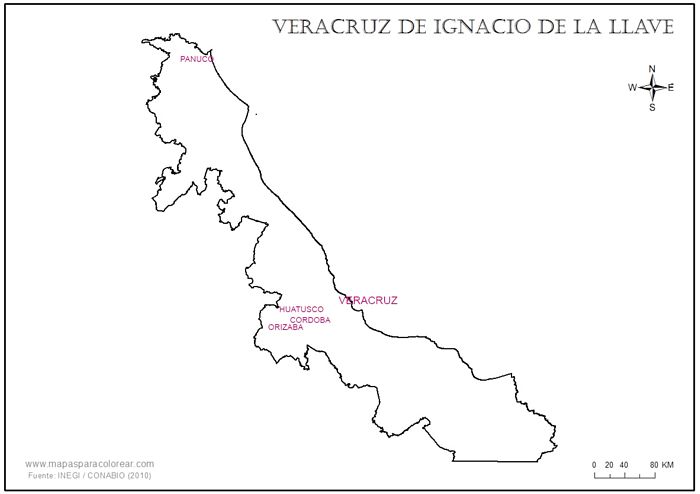
Córdoba
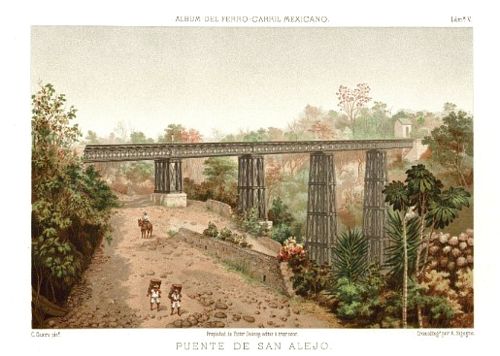
Hacienda San Alejo
By 1868 the brothers Antonio and Eugenio Durand Laurent, originally from Pontis, Bas-Alpes (now Alpes-de-Haute-Provence), France, had settled in Paso del Macho, Veracruz. They began with a grocery business, in a strategic location on the Mexican Railroad, and began to amass a great fortune obtained by the cultivation of sugarcane and coffee. In the year 1900 they were among the main producers of the Canton of CórdobaSouthworth, .
As well as owning the Hacienda San Alejo, in the municipality of Paso del Macho, which was used for the cultivation of coffee, Durand Hermanos served as tenants on farmland belonging to the Haciendas of Vista Hermosa, El Ingenio, Rancho la Palma and El Potrero. They also owned haciendas in Chiquihuite and Naranjal, in the municipality of Atoyac. In the Hacienda El Potrero they had small establishments producing panela that was sold in Veracruz, Puebla, Mexico and MonterreyAGN, Archivo de Antiguos Bancos de Emisión, la Sucursal de Banco Mercantil de Veracruz en Córdoba, fs.24, 109 of 1911, 7, 8, 21, 24, 28 of 1913 and 235 of 1914.
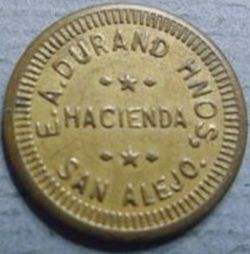
Grove 1556
Obverse: E. A. DURAND HNOS / HACIENDA / SAN ALEJO
Reverse: 5
21 mm. brass
Grove 1556
Obverse: E. A. DURAND HNOS / HACIENDA / SAN ALEJO
Reverse: 50
33 mm. brass
Orizaba
Hacienda del Jazmin
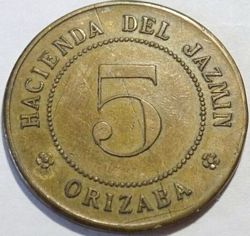
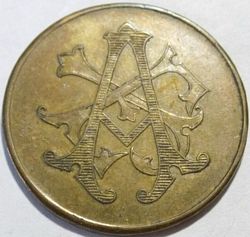
Grove 1500
Obverse: HACIENDA DEL JAZMIN / 5 / ORIZABA
Reverse: monogram AEJ
26 mm. brass
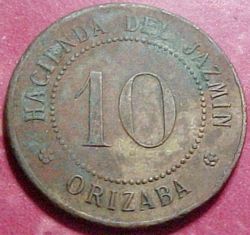
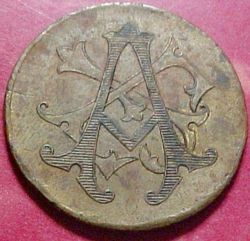
Grove 1501
Obverse: HACIENDA DEL JAZMIN / 10 / ORIZABA
Reverse: monogram AEJ
30 mm. brass
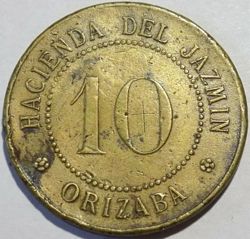
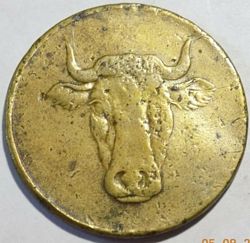
Grove 1502
Obverse: HACIENDA DEL JAZMIN / 10 / ORIZABA
Reverse: a cow's head
30 mm. brass
Huatusco
Josê Fernández
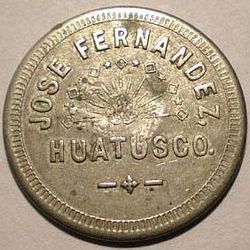
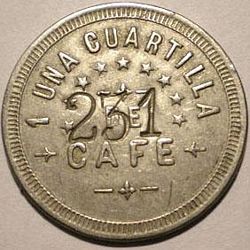
Grove 1343
Obverse: JOSE FERNANDEZ / HUATUSCO
Reverse: UNA CUARTILLA / DE / CAFE
30 mm. nickel
José Fernández introduced the first steam engine to help in the processing of coffee.
Pánuco
Pánuco is a city in the Huasteca Alta region of Veracruz, 50 kilometres west of Tampico.
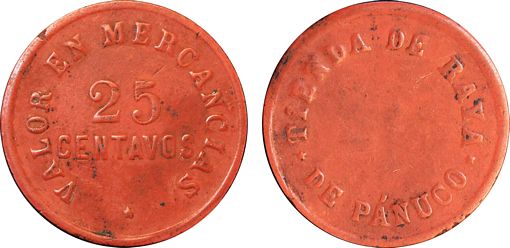
Grove
Obverse: TIENDA DE RAYA / DE PÁNUCO
Reverse: VALOR EN MERCANCIAS / 25 / CENTAVOS
mm. pink coloured plastic
Grove 1952
Obverse: TIENDA DE RAYA / DE PÁNUCO
Reverse: VALOR EN MERCANCIAS / 1 / PESO
40 mm. olive coloured plastic
Veracruz
Hacienda de San José Novillero
In 1823 this hacienda was confiscated from the former convent of Belén and passed into the hands of the city council, but in 1842, by order of the Antonio López de Santa Anna government, it was sold and the proceeds spent in the Yucatán campaign. By 1861, the hacienda was owned by Dionisio José de Velasco, a wealthy Spanish merchant, and when he died on 29 November the hacienda was inherited by his sons: Pedro Juan, Francisco de Paula, Justo José Ramón, José Lino and Dionisio José de Velasco y Carballo, who established the company "Velasco Hermanos" which also owned other properties and operated a sugar mill. The company owned the hacienda for a few decades but by the 1910s, the owner was Manuel R. Morales and after his death in 1918, the hacienda was divided into three lots that were awarded to his sons: Marcos, Isaac and Tomás.
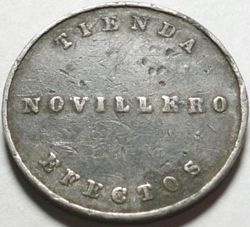
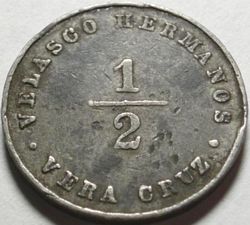
Obverse: TIENDA / NOVILLERO / EFECTOS
Reverse: VELASCO HERMANOS / ½ / VERA CRUZ
Hacienda de Tuxpango
The Hacienda de Tuxpango was a sugar cane plantation near Veracruz.
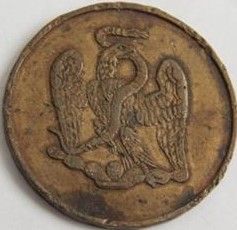
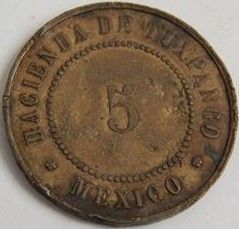
Grove 1636
Obverse: HACIENDA DE TUXPANGO / MEXICO / 5
Reverse: Mexican eagle
25 mm. brass
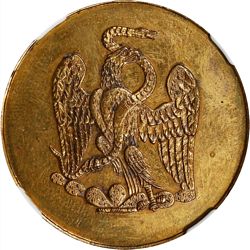
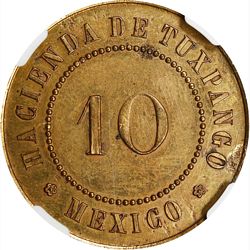
Rulau Ver-25. Grove-1637. (Stack’s Bowers Auction. 16 May 2023, lot 70682)
Grove 1637
Obverse: HACIENDA DE TUXPANGO / MEXICO / 10
Reverse: Mexican eagle
30 mm. brass
Ingenio Montepio
Obverse: INGENIO MONTEPIO / SR (monogram) / 1878
Reverse: VALE PROVISIONAL / 1 counterstamped broken U
A brief mention in a Mexican government report ca. 1890s notes the "plantation called Montepio in the area of Vera Cruz of Senor Carrere and Sebastiano Rueda". The latter is likely to whom is referred by the monogram.
